Landid co-founders Trevor Silver and Stephen Morgan were tasked with working their development magic on the creation of Warner Bros’ glossy Harry Potter film studios visitor attraction in Watford. Sarah Stewart reports. Photographs by Tim Foster
Harry Potter fans in search of Hogwarts School of Witchcraft and Wizardry need not scour the remotest parts of Scotland any longer. Nor will they feel compelled to venture down dark passages around London’s Leicester Square searching fruitlessly for the entrance to Diagon Alley.
Parents the world over can now satisfy the curiosity of their children — and perhaps their own — with a trip to see Harry in the most un-magical of locations: Watford.
The town’s Leavesden Studios is where the eight Harry Potter films were shot. On 31 March Warner Bros opened up the £125m Making of Harry Potter Studio Tour London on the 170 acre site as an attraction to the public in which the sets, props and costumes from the $21bn franchise are showcased.
Already Potter fans the world over are raving about the attraction. Rupert Grint, who plays Harry’s best friend, Ron Weasley, in the films, said with surprise last week: “It is the most glamorous I have ever seen Watford.”
But behind the magic was one unassuming development company that has spent the past two years transforming a film studio that has employed the likes of Alan Rickman and Robbie Coltrane, into a three-hour walking tour.
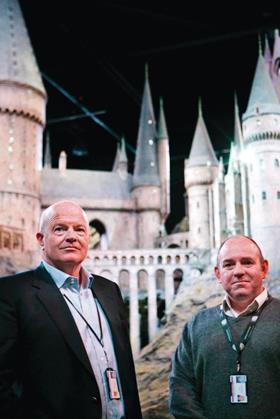
“We hadn’t worked in or alongside the movie business before,” says Trevor Silver, co-founder of Landid. “We knew we had enough experience to do what was required, but it was daunting. We had to deliver within the timescale for a March opening, and we had to deliver on the budget of £125m.
“Those two things were non-negotiable.”
Potty for Potter
Following Warner Bros’ purchase of the site for £22m from MEPC in November 2010, the production company approached Landid to redevelop it into a visitor attraction. The developer’s brief was clear: Warner Bros wanted to extend the shelf life of the Harry Potter franchise that had captivated audiences worldwide.
In addition, it needed to showcase the talent it had used to produce the sets — years of work by set designers, costume departments and special-effects technicians.
The project was a world away from Silver and fellow Landid co-founder Stephen Morgan’s previous work. The duo’s most famous UK project
to date was the refurbishment of the Ark office building in Hammersmith, west London, which reached completion in 2008. Landid bought the scheme in 2006 in a joint venture with GE Capital Real Estate and O&H Properties for £49.5m. Silver says the Ark was the most challenging project of his career because, before Landid’s involvement, it had lain unoccupied for 10 years.
However, in Leavesden they were appointed to refurbish the existing studios, build a visitor centre and create more office space in which future films could be produced, while maintaining the magic of Harry Potter.
“We were appointed in December 2010 when they were still filming the final movie [Harry Potter and the Deathly Hallows: part II]. We would see members of the cast daily on set when we were on site,” Morgan says animatedly, as he takes Property Week on a tour two days before the attraction opened to the public.
“And JK Rowling, too. You cannot underestimate the involvement she had in the development of this scheme. She is a savvy woman and still retains a lot of control.”
As Silver and Morgan begin the tour, the instantly recognisable Harry Potter tune, Hedwig’s Theme, plays in the background, while grown men and women stride across the reception in cloaks as though it is the most normal thing in the world.
Chamber of secrets
The first stop is a cinema where a video, presented by the magical triumvirate, Daniel Radcliffe (Harry Potter), Emma Watson (Hermione Grainger) and Rupert Grint (Ron Weasley), is played, in which the actors explain how Leavesden was home to them and how much work went on at the studios.

Morgan agrees that a lot of hard work was required to develop the attraction as well.
“Opening this was a calculated risk for Warner Bros. They realised that the franchise was incredibly special and wanted to showcase their work, but more property development was required and the refurbishment was extensive.
“Additionally, this attraction is on green belt land. It was a real property development exercise: procurement, planning and construction.”
Landid refurbished 750,000 sq ft of workshops, existing studio space and ancillary space. It developed two new sound stages of 45,000 sq ft and 65,000 sq ft that make up the visitor centre and house the cinema, sets and a gift shop.
The mesh screen on which the film by Harry, Ron and Hermione was projected rises to reveal the first set, the external entrance to Hogwarts: a stone facade with a two huge, decoratively carved oak doors.
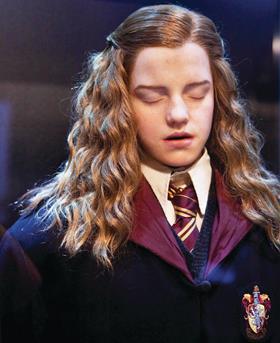
One of many upbeat guides, dressed in a preppy Warner Bros uniform of chinos and polo shirt, appears in front of the doors. She welcomes the group enthusiastically to “Warner Bros studios tour, London”. It would appear that “Warner Bros studios tour, Watford” did not sound quite as magical in the Californian boardroom.
The oak doors are slowly pushed open to the same words used to greet Harry Potter when he arrives at the magical school: “Welcome to Hogwarts.” Beyond the doors, the Great Hall — the most impressive of the sets in terms of size — is revealed. You could be in Christ Church College’s dining hall in Oxford, on which the set was modelled. The flagstones underfoot are made of real York stone, the lead-lined windows are hand finished and the oak tables are convincingly aged. The walls and gargoyles are fibreglass, but it does not matter.
Sadly, the enchanted ceiling does not exist. There are no candles suspended in mid-air as in the film and no panorama of the night sky — just lighting rigs. Everything from about 20 feet up was added in by computers during post-production, says Morgan.
Silver adds: “After a lot of debate, Warner Bros, thinking like Californians, decided that they wanted air conditioning in the Great Hall. There was a lot of creative thinking with the set designers, but those oak panels conceal about 10 large air conditioning units. You would never know.”
The power of Warner Bros
The air conditioning debate was one of many during development. The pair say that communication across the Atlantic was frequent.

“We had a series of scheduled weekly calls to California but, for the first few months, it was more like a call a day. We had two guys from Landid on site the whole time, but all the big issues came to us.”
Silver adds: “We sat between America and all the consultants and contractors. We were responsible for structuring the delivery of the scheme, to manage it, and to certify payment for it all. When they had allocated the money, they told us that they didn’t want any shocks. As a development manager, your responsibility is to prevent any shocks.
“We were in a fortunate position that, in a previous life, we had sold a business that we had set up called Akeler to Security Capital — a US firm. As a result we were used to conference calls, strict financial controls and a desire to keep options open until the very last moment on things like air conditioning, and even the food that was served in the cafeteria. We were even consulted on that.”
As we continue through the complex, we turn a corner on to Diagon Alley, a cobbled high street with an extensive retail offering for the wizard demographic: Ollivander’s wand shop, Potage’s cauldron shop and Eeylops Owl Emporium. The internal sets on display were selected by California-based design and development company Thinkwell.
Morgan is able to point out exactly where Gringotts Bank is in relation to joke shop Weasleys’ Wizard Wheezes, which proves his claim he is the more Potter-proficient.
“Having teenage daughters who are fans of Harry Potter really helped me with this project because I just got it, I got how culturally significant it was. It was a bit of a slow burner for Trevor.”
Silver, whose daughter is still a little too young for Potter, explains: “I appreciate it far more now. We went for a meeting in China about a possible project in Nanjing. We spoke at length to these guys about office projects that we had done, like the Ark. When we mentioned Harry Potter, all they wanted to talk about for the rest of the meeting was Harry Potter.”

As we walk through the Gryffindor common room, where empty mugs have been discarded and well-thumbed books lie on comfy-looking sofas, we find ourselves on the “back lot”, or Privet Drive, the road on which Harry Potter’s abhorrent extended family lives. A full-size house has been built, complete with trimmed hedges and perfectly mown grass. The Knight Bus, a triple-decker purple Routemaster, sits opposite.
A room of machine-operated animals, prosthetic hands, masks and costumes await in the final phase of the complex. This last room, which was not featured in any of the films, is perhaps the most impressive. At 20 ft long and 20 ft wide, it is filled from floor to ceiling with around 5,000 narrow wand boxes. Each box is inscribed with the name of every person who worked on the films, from A-lister to canteen worker.
Silver and Morgan do not have wands in the room, but they can at least be confident in the knowledge they have put Watford well and truly on the tourist map.








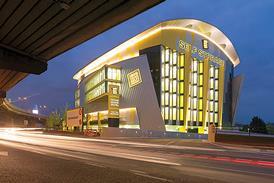















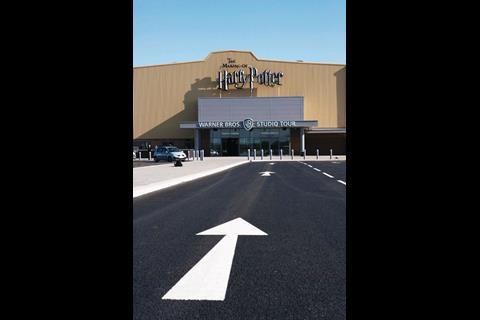
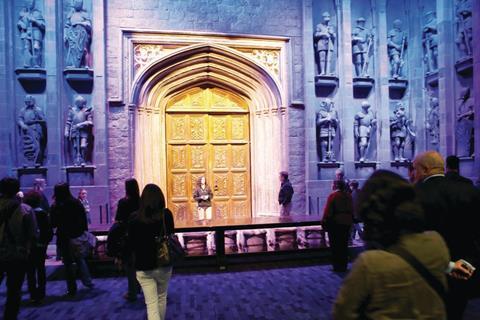

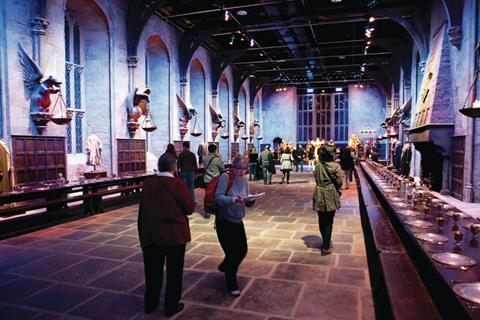




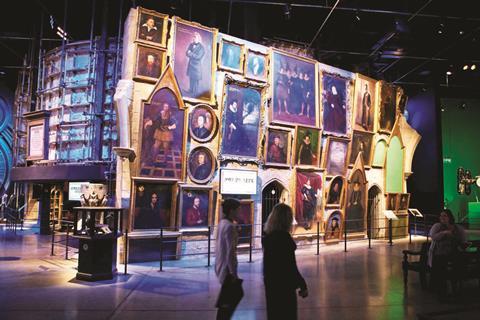

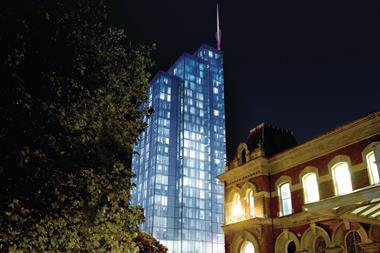

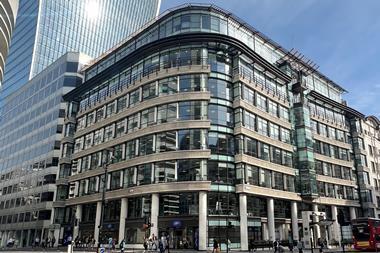

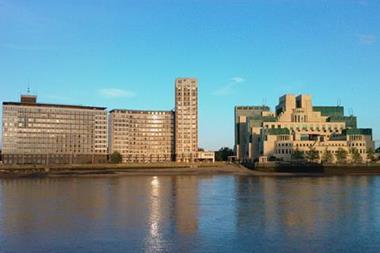
No comments yet